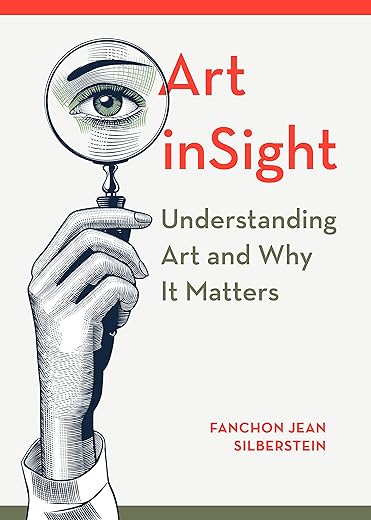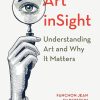Art inSight: Understanding Art and Why It Matters
£15.20
PREFACE INTRODUCTION Chapter 1: The ORIGINAL SKYPE Meet a cave dweller, an African king, an Egyptian pharaoh, a Greek goddess, a Christian saint, and others who let you know who they are and what matters. What would a Roman general and Elvis Presley have to say to one another? Chapter 2: Figure Things Out Art is traditional, innovative, noisy, silent, figurative, abstract, pretty, ugly, orderly or messy. Objects change meaning depending on where they are and what is around them. Chairs, windows, animals, people, and trees may show up in unfamiliar places. Understanding grows through dialogue. Chapter 3: STEP Back to Go Forward Images from ancient to contemporary art show views of time, nature, human relationships, and more. Artists transform invisible values into visible forms and reveal ways people and cultures make sense of their worlds. Chapter 4: WHOSE LENS? Labels and headlines lead you to expect certain ideas. Artists use their perspectives to manage yours. Your tastes, opinions, prejudices, and past experiences affect what you see. When you are alert to the difference between projecting and receiving, you can move from sight to insight. Chapter 5: ART IN DIALOGUE Paintings from 16th century Iran and 20th century America talk to one another. They learn what is important to each by asking questions and modelling open-hearted dialogue. They see how artists in both cultures paint unreal scenes to seek what is real. Chapter 6: The CAPTURE Students in communication and mediators in training meet modern art at the Hirshhorn Museum. They ask one another what they see and answer by describing. They discuss each others’ perceptions. Successful mediators must be fine observers and excellent listeners. Chapter 7: QUESTION AND PLAY Practice overhearing yourself through questions and play. Simple observations lead to complex ideas. Circles and lines make up pictures and provide metaphors in art and in life. Narrow categories limit understanding. Questioning art is a form of intercultural communication. Chapter 8: Travel Go to new places through art without suffering culture shock. A bowl, etched with calligraphy, takes you on a journey to Iran, and a soup can goes with you to America. Both are more than their visual forms. Questioning them carries you from surface to depth. Chapter 9: WHEN ART SPEAKS, LISTEN Language of all kinds communicates, bewilders, clarifies, and obscures. Become fluent in the language of art and question its colours, materials, and forms – its titles, symbols, archetypes, and frames. “Speaking” the language of art leads to cultural fluency. Chapter 10: FOLLOW YOUR SENSES – SENSE MEANING Body and mind work together. Your senses introduce you to art and to the rest of the world. Notice your first reactions, your thoughts and feelings. Then, return to the art by observing and describing. Open yourself to others’ stories. Chapter 11: MAKE SENSE OF THE SENSELESS In the wake of the 9/11 attack on the World Trade Centre in New York, artists used small things to confront large ideas. Prayer rugs and cheeseburgers are filled with meaning. Find spiritual beliefs, patriotism, war, sex, and politics, along with fears, loves, desires, and angers. Chapter 12: IN OTHER WORLDS In 2010, the world watched the rescue of trapped Chilean coal miners. Artists take you underground to their dark world. Go more deeply into yourself through detailed questions about what you see in places you may never enter except through art.
Read more
Additional information
| Publisher | 1st edition (1 Jan. 2020), Intellect Books |
|---|---|
| Language | English |
| File size | 24287 KB |
| Text-to-Speech | Enabled |
| Screen Reader | Supported |
| Enhanced typesetting | Enabled |
| X-Ray | Not Enabled |
| Word Wise | Enabled |
| Sticky notes | On Kindle Scribe |
| Print length | 309 pages |









by Anonymous
Sort reviews by
Top reviews
Most recent
Top reviews